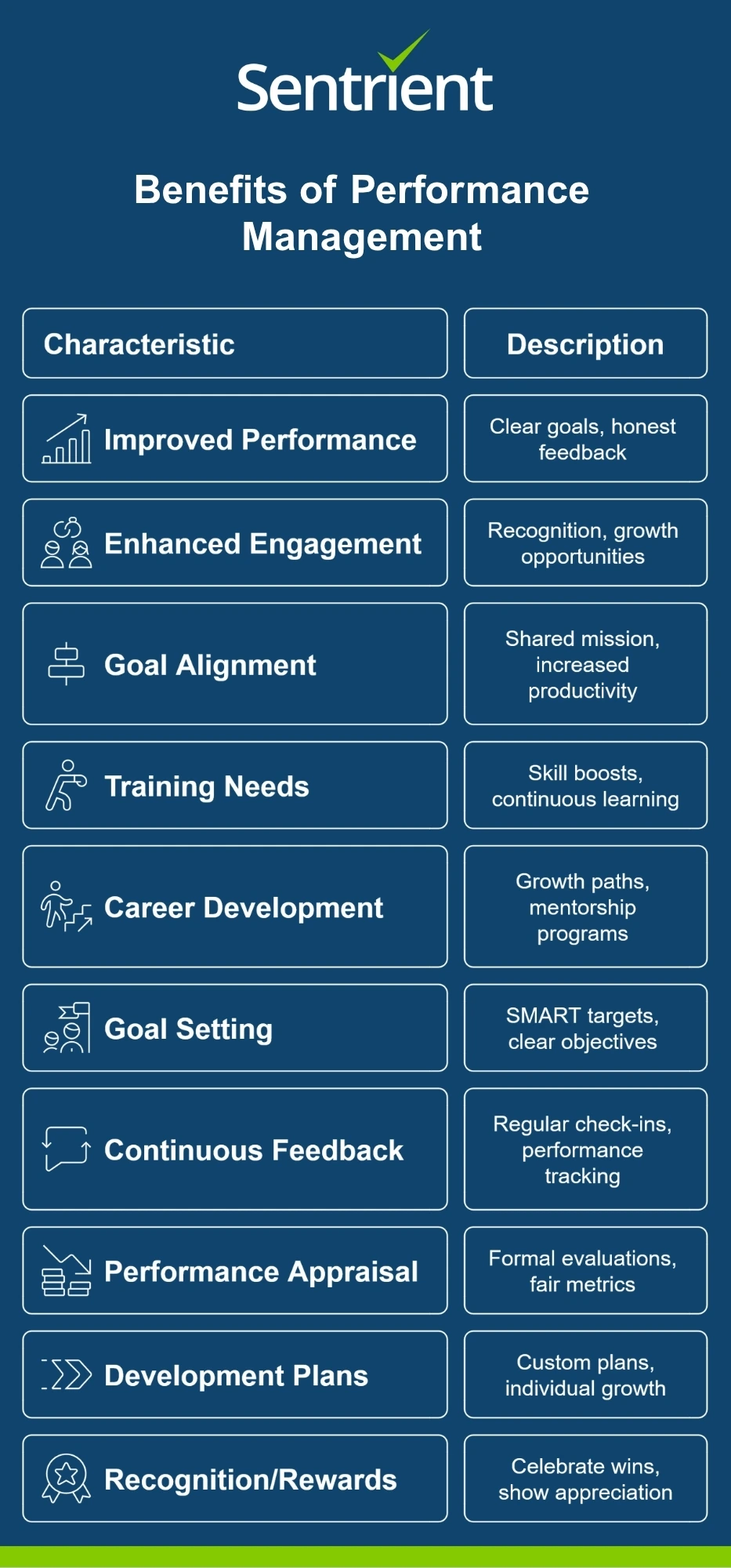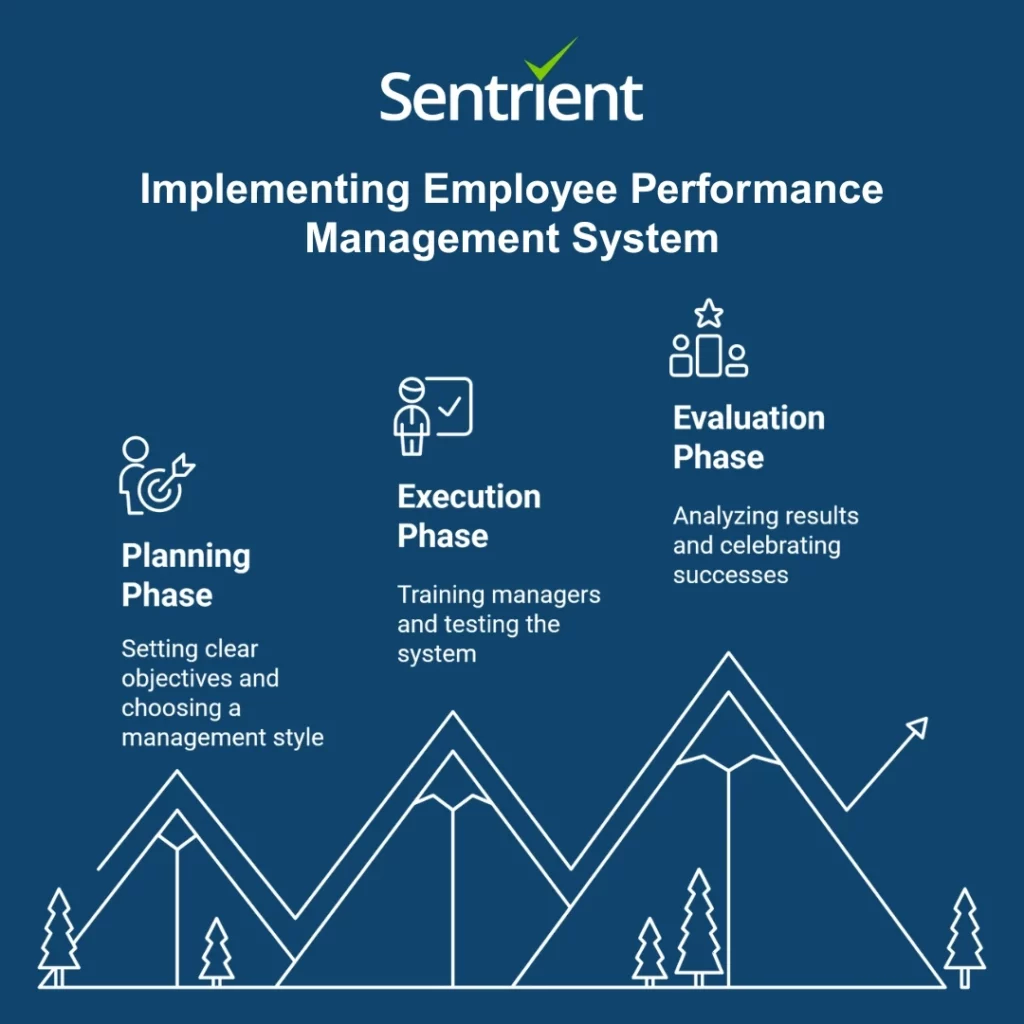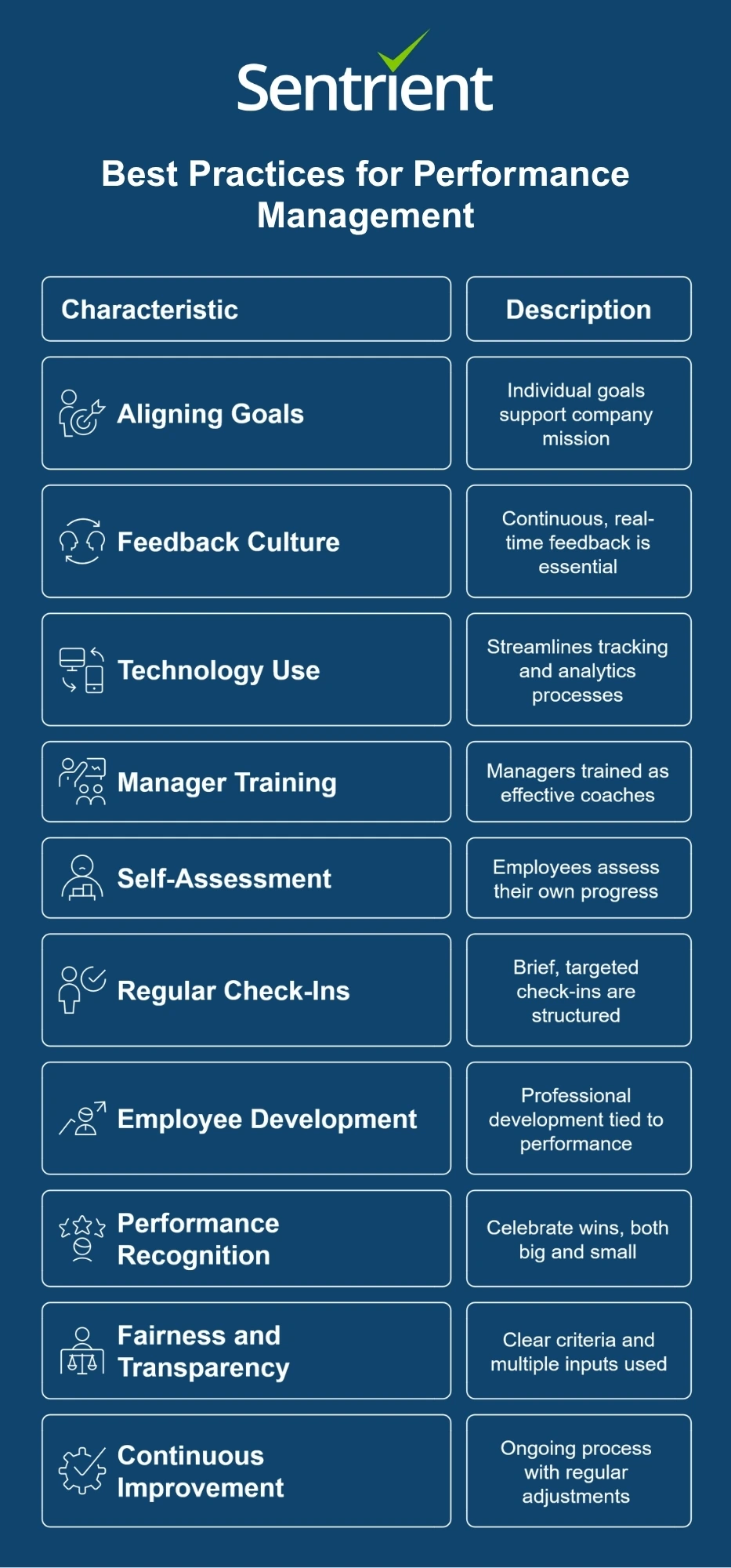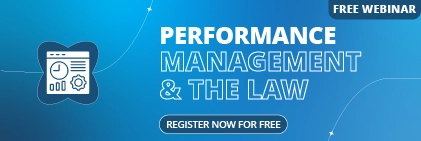Every organisation nowadays needs a high-performing workforce. It’s not optional anymore – it’s a necessity if you want to succeed. So, the question remains: How do you ensure your team is doing their best? The answer is simple – an employee performance management system. An employee performance management system goes beyond the typical annual reviews. An established system creates a process of continuous improvement. It ties your employees’ goals to the big picture of your organisation, encouraging growth and fuelling success. For HR managers in particular, clarifying your team’s potential might be what you need to elevate your business. Performance management can bring your team together and help them achieve their goals, and help your business. Let’s go through what an employee performance management system is and the key benefits it brings.
What is Performance Management?
Performance management is all about using formal, structured processes to boost performance while keeping it in line with your organisations desired outcomes. The classic annual review no longer gives results in line with modern expectations. Alternatively, a strong employee performance management system sets clear expectations, giving valuable feedback on a regular basis. This lets your employees strengthen what needs to be strengthened and work on any identified weaknesses. Think of it as a roadmap that helps every team member contribute to the company’s success.
Why It’s a Big Deal Today
The modern business landscape is saturated with change. Shifting markets, new technologies, everything is always evolving. To keep up, not to mention getting ahead, an adaptable team is critical for your business. Performance management creates a framework for keeping employees engaged and focused on not only their individual tasks, but the bigger picture as well. It highlights your best workers and lifts up those who may need additional support. Strong performance management systems often see large jumps in productivity. That’s a huge factor for business owners looking to boost results and increase profits. Not only that, when employees know what’s expected of them and feel adequately supported, they’re far happier and more likely to stick with the company.
Performance management is an ongoing, continuous process, not just a one-off event. It can connect the efforts of individual workers to wider company goals, while ramping up productivity. It also ties in with other key metrics for HR, helping handle high turnover rates and build experienced, hardworking employees.
Benefits of Performance Management

A solid employee performance management system delivers a ton of perks that can transform your organisation. Let’s break down the big ones:
1. Improved Employee Performance
Clear goals and regular, honest feedback are essential for setting up your team for success. Knowing what to expect and getting tips on what to improve helps them adjust as needed on the go. Teams with consistent feedback know what to keep doing, and what needs changing. Keeping your teams dynamic and flexible, while still outputting results in potentially high pressure environments, will give you the edge over others.
2. Enhanced Employee Engagement
It’s common knowledge people stay motivated when they’re recognised for their achievements. Companies with the best performing employees all say that showing your appreciation for your top workers, and giving them opportunities to grow and reach their full potential is a key factor in why they’re at the top. Engaged employees will work harder and stay longer, which means keeping employees engaged will keep your employees with you.
3. Better Alignment with Organisational Goals
Employee performance management makes sure everyone is on the same page when it comes to the company’s mission. Harvard Business Review suggests that this can boost revenue; however, the real focus is on productivity. Organisational alignment helps ensure all hands are on deck and that wasted resources are minimised.
4. Identification of Training Needs
Regular check-ins reveal where skills need a boost. LinkedIn’s data shows a high percentage of employees stick around longer when they get chances to learn. Training keeps your team sharp and ready. The ability to identify gaps in your onboarding or training processes is crucial and helps reduce the volume of future performance management reviews. A poorly trained workforce can be detected early through regular performance reviews and fixed before they have a significant effect on the business.
5. Facilitation of Career Development
Development plans help to map out future growth paths. This can include training, but also encompasses areas like mentorship programs. A healthy employee performance management system highlights opportunities for growth. This helps motivate employees and increases retention. Today’s performance management often uses real-time data, which helps keep top talent.
6. Goal Setting
Start with SMART goals – Specific, Measurable, Achievable, Relevant, Time-bound. They give employees a clear target to hit. This is the backbone of performance management. With this framework for goal setting, employees will naturally motivate themselves to perform better.
7. Continuous Feedback
Forget waiting for an annual review. Regular check-ins keep performance on track. Tools like performance management software make it easy. Sentrient’s Employee Performance Management System is a fantastic tool that’s scalable for businesses of all sizes.
8. Performance Appraisal
Formal evaluations measure progress and guide decisions. Use clear performance metrics to keep it fair. While these evaluations should be fair, don’t be afraid to explain how and why you came to your conclusions. There’s nothing worse than telling an employee they’re underperforming, but not specifying how or where.
9. Development Plans
Custom plans tackle individual growth, like training or coaching. These are key for employee development plans. Developing personalised plans for individual employees can become challenging when dealing with large-scale operations. A feasible alternative is to design plans tailored to specific roles, which managers or team leaders can subsequently customise to suit each employee’s needs.
10. Recognition and Rewards
Celebrate wins with bonuses, raises, or a simple shoutout. Recognition for one’s success is essential in motivating your employees and creating a culture of pride in your work. Together, these pieces create a cycle that drives growth and success.
How to Implement an Employee Performance Management System

Rolling out an Employee performance management system takes some planning, but it’s worth it. Here’s how to do it:
Planning Phase
Setting clear objectives for what your desired outcome is is critical. If you and your team don’t know what you’re aiming for, you’ll inevitably miss your target. Clarifying the KPIs you want to see the most improvement in could help. Higher productivity, better alignment, or employee skill growth are all common targets when first implementing an employee performance management system. You’ll want to choose a style that integrates best with your existing processes.
This could be 360-Degree Feedback, or Management by Objectives. Whichever system works best for you, is what you should go for. Ensure you lay out policies and procedures in advance, so your team knows what to expect and can adjust to the changes within a reasonable timeframe. Clarity in your workforce is the most important factor, and if you’re struggling in this phase, always keep in mind that communication is key.
Execution Phase
This is often a chaotic phase. The goal is to bring as much structure as possible to minimise wastage. Train your managers and other members of the leadership team early and let them disseminate knowledge downwards to reduce pressure on upper management. Managers should be ready to initiate and lead performance reviews. They need to be briefed on the importance of consistency and fairness in all their reports. It’s often best to test it with a small group first, before rolling it out to the whole organisation. Track your progress during this phase and adjust as needed before implementing it to everyone. You should use software like Sentrient to see how it’s going and make easy adjustments on the fly.
Evaluation Phase
Do a deep dive into the results. All the data you collect is incredibly valuable and a clear indication of whether you’re doing well or not. It can often take time for results to appear, since performance management is a long-term process of improvement. Once you have results, however, you should look at the engagement and performance metrics. Ideally, these have improved, but if they haven’t, a thorough review is undoubtedly needed. Tweak the system and use feedback from employees and managers to make it better. Ensure you celebrate the successes and share your wins to keep the momentum going!
Challenges in Performance Management
Resistance to change is a common challenge. This often comes from a lack of communication or training with your staff. Change can be scary, and new systems can worry your staff. This is often best remedied by embedding the change into your culture and into your onboarding process. Inconsistent goals or fuzzy feedback are also killers of performance management. An unbiased and crystal clear feedback system is essential in an effective employee performance management system. Other factors that cause unease are random check-ins or the lack of a formalised feedback schedule.
Best Practices for Performance Management
Clear communication is key. The leadership team needs to explain the process, why they’re implementing it, and why it’s good for everyone. Trust needs to be established between employees and managers if an employee performance management system is going to work. The use of technology is also essential. Software makes recording and tracking feedback extremely intuitive. Training managers is also essential. The bulk of your training should be focused here, with the managers then passing down the knowledge to those who need it.

Quick Takeaways:
- Performance management ties employees to company goals.
- It lifts performance, engagement, and retention.
- Core pieces include goals, feedback, appraisals, plans, and rewards.
- Rollout needs planning, action, and review.
- Watch for challenges like resistance or bias.
- Best practices like tech and training make it work.
Conclusion
An effective employee performance management system is essential for any organisation looking to stand out today. It boosts productivity, keeps employees engaged, and aligns your team with your vision. For HR managers and business owners, it’s the best way to turn unrealised potential into results.
Start by setting clear goals and picking a framework that fits. Use tech to keep the transition and implementation smooth. Tackle challenges head-on and stick to industry best practices. The results? An engaged team and a stronger business. Please don’t wait until it’s too late. Check out Sentrient’s performance management software, train your team, and watch your business excel.
FAQs
1. What’s the difference between performance management and performance appraisal?
Performance management is an ongoing process of setting goals, giving feedback, and growing employees. Performance appraisal is just one part of the process, a periodic review of past work. Reviewing past performance helps you set a baseline for the employee, but the process of continuous improvement is what sets an employee performance management system apart.
2. How often should performance reviews happen?
Aim for quarterly or monthly reviews. Regular performance review processes keep feedback fresh and employees motivated. Overly infrequent reviews mean that by the time critiques are presented, they’re often outdated.
3. How does technology help with performance management?
Tools like performance management software track progress, store feedback, and simplify reviews, making everything faster and more accurate. Minimising the labour cost while maximising productivity is the name of the game.
4. How can we cut bias in performance appraisals?
Use clear metrics, train managers, and add peer reviews for a fair employee performance evaluation. You may be tempted to use managers who aren’t familiar with employees to prevent favouritism. This can backfire because the reviewer needs to know the strengths and weaknesses of the employees in question.
5. What mistakes should we avoid in performance management?
Don’t set vague goals, skip recognition, or give weak feedback. These can tank your employee performance management system. Keep a strong and structured environment.





